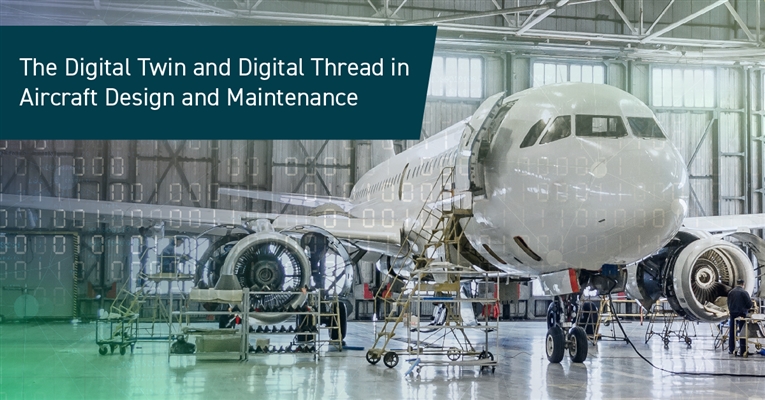From Product Configuration to Predictive or Condition Based Maintenance (CBM+)
There are many use cases for digital twins across the product lifecycle in the Aerospace industry. For the manufacturer there is Product Lifecycle Management (PLM) technology available now to link product data in the design, engineering, and manufacturing stages, and to capture changes as the product evolves. We call this connection the digital thread. Many manufacturers are realizing the importance of creating digital threads between departments.
There is a need to connect everything through to the final manufactured product’s digital twin. We refer to this as the digital twin configuration which displays the as-built configuration of a product – with the ability to link to all product data history, decisions made, who made them and why, including CAD models, simulations, and requirements. The initial version of the digital twin can then be updated as changes to the asset are made so that organizations have a complete historical record of each individual asset, in this case, airplanes, drones, etc.
This information can be used to help the aerospace industry move closer to Predictive or Condition Based Maintenance (CBM+) and away from the current preventive maintenance schedules recommended by OEM vendors – creating greater efficiencies and lowering the cost of maintenance.
Simulation and modeling with the digital twin
Building a digital twin configuration creates an opportunity to bring modeling and simulation techniques out to the operations phase of an asset. These capabilities can be used to compare operational data, simulate the behavior of the asset now, as well as the future state of the asset if the behaviors continue. This allows organizations to improve accuracy of operations and maintenance decisions to optimize their aircraft fleets and can be used by OEMs to support future product improvements in next generation aircraft.
Modeling and simulation capabilities are separate from a digital twin. These capabilities are used most often in the design phase and are referred to as digital models, not digital twins. There are emerging opportunities that surface when assets are in operation, for example, leveraging modeling and simulation technologies in the field. To do this correctly and improve accuracy, a digital twin configuration is required so that you are modeling and simulating the exact representation of the asset. Connecting the digital twin configuration to the digital thread of product data allows operations and maintenance to access original models and simulations created during the design phase for use as a comparison.
Leveraging performance data for sustainability and aircraft design
Aras defines the digital twin space differently than most vendors, seeing two parts of a digital twin. First, the digital twin configuration defines what the asset and its components are, which is then connected to product, maintenance, and operational data. Second, there is performance data that takes information generated from assets and compares it to the individual configuration of the asset to make operational and maintenance decisions to meet their business needs.
Getting the latest as-running condition of the asset operating in the field using Internet of Things (IoT) sensors is of great importance to aircraft designers and OEMs in identifying potential design flaws and facilitating design changes. Comparing real-time data against the as-running digital twin configuration allows for the ability to apply various simulation models to predict behavior of the physical asset and create different operating scenarios to decide when to plan or defer maintenance in order to keep the asset from failing. This is a significant step forward in the industry’s use of predictive maintenance.
Maintenance is historically performed based on OEM’s recommendation on a fixed schedule which results in increased maintenance costs. Predictive maintenance provides a flexible schedule-based approach to the ability to predict the probability of failure. Maintenance can be scheduled to prevent the asset from failing before it happens. This decreases the cost of maintenance cost while also increasing the effective utilization of the asset.
Interested to know more? Visit our digital twin core solution page.

